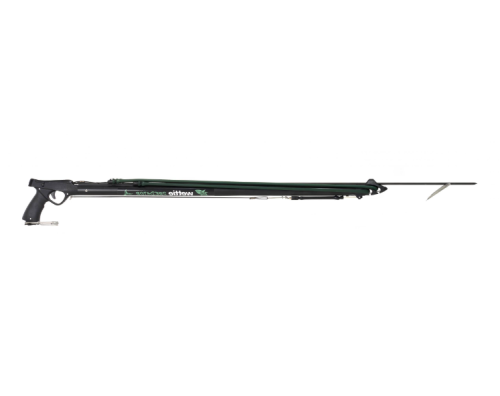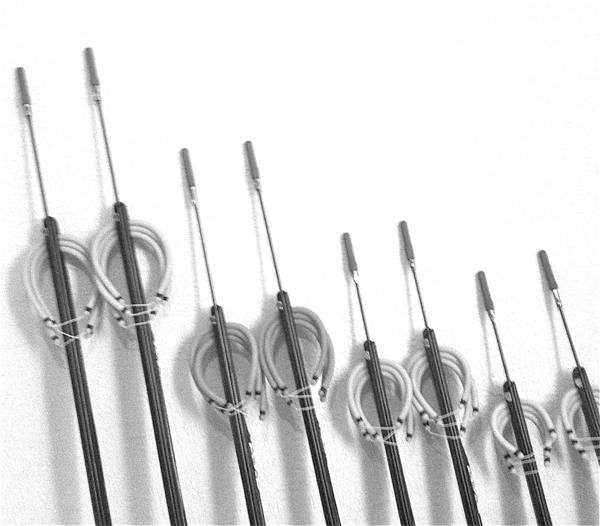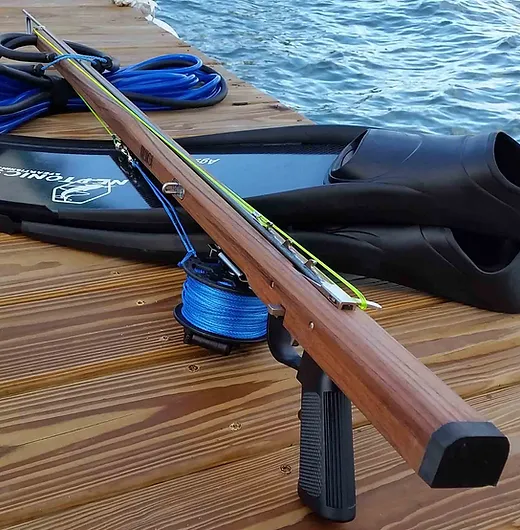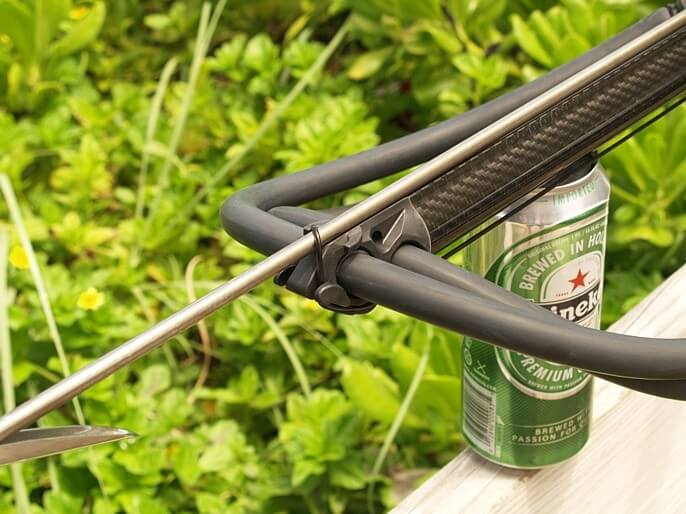
There are a huge number of speargun varieties, each with positives and negatives depending on what they’re being used for.
The following is a deep dive into many of the options available on the market.
Length
To begin with spearguns come in a number of different lengths, ranging from less common 60cm guns to big game hunting blue water 150cm+ spearguns. The length of the gun determines how much power the barrel is able to handle without compromising accuracy. This means that the habitat and size of the species being targeted with that gun can determine the length you opt for. Length also dictates how maneuverable the gun is underwater. The longer a gun is, the more difficult it can be to turn quickly for a shot. Choosing the most appropriate length for your gun is generally determined by target species and the area you are hunting in. For example, someone who targets mostly Butterfish, Blue Cod and other small reef species perhaps most often shore diving may opt for a shorter barrel in the range 70-100cm. Someone who dives off boats more frequently and targets larger pelagic fish such a Kingfish or Tuna will want a longer more powerful gun likely >100cm. Length can also be influenced by the visibility you frequently dive in. If you are someone who often dives in lower visibility, opting for a shorter gun is going to make seeing and shooting fish easier than with a longer gun.

Rubbers
The number of rubbers used once again determines how much power the speargun has. A gun with a single rubber has less power than a gun with double rubbers, and so on. Adding rubbers will cause the spear to travel faster when shot but can also effect the accuracy of the gun. Having too much power for the length of the barrel can cause the gun to shoot low and takes some time to get used to.
Rubbers also come in a variety of thicknesses. The thicker the rubber once again, the more power the gun will have.
Target species is to be considered when selecting the number and thickness of rubbers. Larger fish require more power to effectively spear them, thus requiring thicker and a greater number of rubbers. Smaller reef fish do not require the same power and therefore smaller rubbers and less of them are needed to hunt effectively.

Materials
There are three main materials that spearguns come in: aluminum, carbon, and wood.
Aluminum is most common and tends to be the affordable option, it is relatively lightweight and resistant to corrosion. Aluminum also tends to be slightly positively buoyant, meaning its buoyancy can be useful to divers when loading/unloading amongst other instances. Aluminum is a low maintenance material that really only requires a freshwater rinse after use. These reasons make aluminum a popular choice for Spearos.
Carbon barrels are chosen because they are lighter and exceptionally strong for their weight. Carbon has a greater resistance to warping, as well as chips and dents, making this a highly durable option for a speargun. Carbon guns tend to be high end and the lighter feel makes them more maneuverable in the water. Carbo guns are also highly customisable, meaning that manufacturers can adjust the volume and density of the barrel in order to change the buoyancy of the gun. Therefore there is a range of options on the market depending on how you want a gun to behave in the water.
Wood guns are often high end and the preference of spearo’s looking to target big game fish. Wood provides an aesthetic to the gun that appeals to many. Additionally wood tends to be quieter than aluminum or carbon guns, meaning less rattling of the gun, reducing the risk of scaring fish off. Wood requires maintenance beyond the usual freshwater rinse. In order to stop rot, the wood must be oiled occasionally. This will increase the longevity of the wood.

